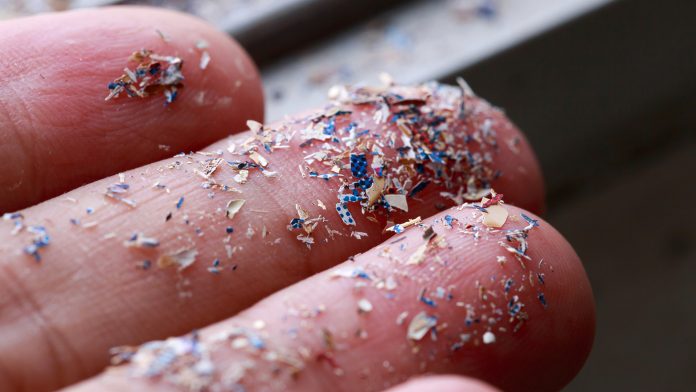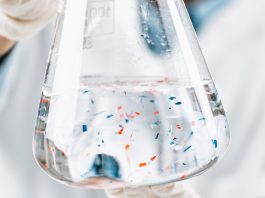University of Birmingham research has identified a concerning pathway for absorbing toxic chemicals into the human body through skin contact with microplastics.
The research presents the first experimental evidence that toxic chemicals used to create flame-proof materials can be absorbed via the skin through contact with microplastics.
The findings underscore the potential health risks associated with exposure to flame-retardant and plasticiser chemicals, which persist in various everyday items despite being banned due to their harmful effects.
The study reveals that chemicals used in flame retardants and plasticisers, once embedded in microplastics, can leach into human sweat and subsequently penetrate the skin barrier, entering the bloodstream.
This discovery highlights a previously unrecognised route of exposure to these hazardous substances, raising alarms about their impact on human health.
Dr Ovokeroye Abafe of Brunel University, who was involved in the study while at the University of Birmingham, explained: “Microplastics are everywhere in the environment, and yet we still know relatively little about the health problems that they can cause.
“Our research shows that they play a role as ‘carriers’ of harmful chemicals, which can get into our bloodstream through the skin.
“These chemicals are persistent, so with continuous or regular exposure to them, there will be a gradual accumulation to the point where they start to cause harm.”
Persistent environmental contaminants
Despite regulatory measures, many of these toxic chemicals used as flame retardants and plasticisers persist in the environment, lingering in older electronics, furniture, carpets, and building materials.
These chemicals are known to seriously affect human health, causing damage to the liver and nervous system, heightening the risk of cancer, and impacting reproductive health.
This persistence amplifies the potential for human exposure, especially considering the widespread prevalence of microplastics in the environment.
Simulating exposure to microplastic chemicals
In experiments conducted by the research team, innovative 3D human skin models were utilised as alternatives to traditional laboratory animals and excised human tissues.
Over a 24-hour period, these models were exposed to microplastics containing polybrominated diphenyl ethers (PBDEs), a common flame-retardant chemical group.
Concerning absorption results
The study demonstrated that up to 8% of the chemicals present in the microplastics could be absorbed by the skin.
Moreover, the level of absorption was found to be influenced by the hydration level of the skin, with more hydrated skin showing higher rates of chemical uptake.
These findings provide crucial insight into the mechanisms through which toxic chemicals from microplastics contribute to the body’s burden of pollutants.
Dr Mohamed Abdallah, Associate Professor of Environmental Sciences at the University of Birmingham, added: “These findings provide important evidence for regulators and policymakers to improve legislation around microplastics and safeguard public health against harmful exposure.”
As concerns over microplastic pollution and its associated health risks continue to mount, this research underscores the urgency of addressing the sources and impacts of these pervasive environmental contaminants.









